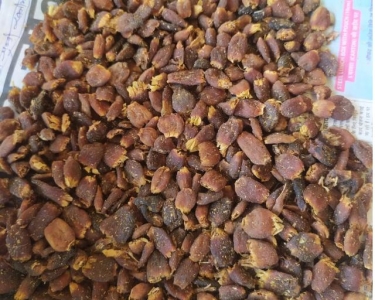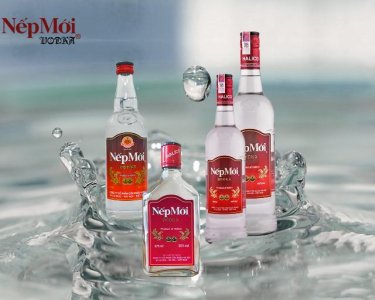Honey
Couldn't find the product you want?
Fill out this form to request the product.
Products You May Like
Export from Angola
Angola is a country situated in Southern Africa. The economy of Angola is one of the fastest-growing economies in the world . Since the end of the civil war, Angola government has made great strides in order to stabilize the country's economy. Angola has developed trade relations and development co-operation with regional as well as global partners. Owing to the favorable international trade environment, Angola export figures have almost increased threefold in the period 2006-2009.
The liberalization of the economy has allowed Angola trade profile to attract significant foreign investment, primarily in the mining sector. Petroleum products dominate in Angola export trade market. China has promised considerable assistance to Angola, one of its main oil suppliers. Angola diamonds industry is another significant contributor. Petroleum and diamond industry constitute more than 80% of the total export value. Angola exports products mainly to China, France, the USA and EU. Almost all oil export from Angola goes to the USA. Other major export products are: coffee, sisal, cotton, lumber, fish.
U.S. companies account for more than half the investment in Angola. Doing business in Angola can be challenging and foreign businesses need to do their homework before entering the market. The U.S. exports industrial goods, mainly oilfield equipment, mining equipment, chemicals, aircraft, and food to Angola, while principally importing petroleum.
Trade on Export Portal, find business partners, suppliers and customers in Angola!
Import to Angola
Since the colonial period, Portugal has remained the main trade import partner of Angola (18% of total imports). Angola imports textile products, food, vehicles, and spare parts, machinery and electrical equipment, medicines and military goods. Other leading import partners include such countries as South Africa, the USA, the UK, France, Brazil, South Korea and China. At the time that the Angolan economy is emerging, there is a continuous increase in imports. On the other hand, with exports exceeding the import value, the country has a favorable balance of payment.
As a part of the least developed countries, Angola takes advantage of duty-free preferential agreements by EU and the US. After WTO accession, Angola has molded its fiscal policy to incorporate international standards. The country is trying to adjust custom tariffs as per GATT 1994 structure.
Are you an exporter, manufacturer, wholesaler or supplier based in Angola? Use Export Portal to list your goods from Angola and find importers around the world. Export Portal - an international import export source for trade leads, import export leads, b2b marketing and directory.
Honey has been used by countless cultures all around the world over the past 2,500 years and no wonder! Over its history as a food, the main uses of honey are in cooking, baking, desserts, such as mel i mat, as a spread on bread, and as an addition to various beverages, such as tea, and as a sweetener in some commercial beverages. Honey barbecue and honey mustard are other common flavors used in sauces. Honey is truly a remarkable substance, made even more extraordinary by the process with which it is made. This blend of sugar, trace enzymes, minerals, vitamins, and amino acids is quite unlike any other sweetener on the planet. Also, many honey's health benefits have made it an important element of traditional medicines and scientists also are convinced of honey medicinal value.
Honey has been valued as a natural sweetener long before sugar became widely available in the 16th century. Honey production flourished in ancient Greece and Sicily. Nowadays it's China, Turkey, and Argentina that are the top producers of honey, followed by Ukraine and the United States. Mexico is also an important producer of honey, providing more than 4% of the world's supply. Most of Mexico's Yucatn producers are small, family operations who use original traditional techniques, moving hives to take advantage of the various tropical and subtropical flowers. At Export Portal are presented all the types of honey from all the quality honey producers of the world. We have suppliers of honey from all the countries.
Buying honey can be a tricky process if you don't know what signs of a good hony quality to look fo. We will help you understand what are the indicators of quality of honey.
- High-quality honey can be distinguished by fragrance, taste, and consistency. Ripe, freshly collected, high-quality honey should flow from a knife in a straight stream, without breaking into separate drops. After falling down, the honey should form a bead. The honey, when poured, should form small, temporary layers that disappear fairly quickly, indicating high viscosity. If not, it indicates excessive water content (over 20%) of the product. Honey with excessive water content is not suitable for long-term preservation.
- Crystallized honey, also called "granulated honey" or "candied honey" is not bad, either, it's just honey in which some of the glucose content has spontaneously crystallized from solution as the monohydrate. Honey that has crystallized can be returned to a liquid state by warming.
- Pasteurized honey is honey that has been heated in a pasteurization process which destroys yeast cells. It also liquefies any microcrystals in the honey, which delays the onset of visible crystallization. However, excessive heat during the pasteurization affects appearance - it darkens the natural honey color, changes the taste and fragrance.
We have prepared a classification of honey to help you understand which kinds of honey are there and how they differ. Honey is classified by its floral source, and there are also divisions according to the packaging and processing used. There are also regional honeys. Let's see:
- Usually, honey is classified by the honey's floral source of the nectar from which it was made. Honey is traceable to floral source and therefore region of origin.
- Blended honey means that it is a mixture of two or more honeys differing in floral source, color, flavor, density or geographic origin.
- Polyfloral honey, also known as wildflower honey, derives from the nectar of many types of flowers. The taste may vary from year to year, and the aroma and the flavor can be more or less intense, depending on which bloomings are prevalent.
- Monofloral honey is made primarily from the nectar of one type of flower. Different monofloral honeys have a distinctive flavor and color.
- Honeydew honey is made when instead of taking nectar, bees take honeydew, the sweet secretions of aphids or other plant sap-sucking insects. Honeydew honey is very dark brown in color, with a rich fragrance of stewed fruit or fig jam, and is not as sweet as nectar honeys.
There is also a classification of honey by packaging and processing you should be aware of when buying honey. Generally, honey is bottled in its familiar liquid form, but can be sold in other forms, as well it can be subjected to a variety of processing methods.
- Raw honey is honey as it exists in the beehive or as obtained by extraction, settling or straining, without adding heat - although some honey that has been "minimally processed" is often labeled as raw honey. Raw honey contains some pollen and may contain small particles of wax.
- Filtered honey is very clear and will not crystallize as quickly, making it preferred by the supermarket trade.
- Ultrasonicated honey has been processed by ultrasonication, a non-thermal processing alternative for honey. When honey is exposed to ultrasonication, most of the yeast cells are destroyed.
- Creamed honey, also called whipped honey, spun honey, churned honey, has been processed to control crystallization. Creamed honey contains a large number of small crystals, which prevent the formation of larger crystals that can occur in unprocessed honey. The processing also produces a honey with a smooth, spreadable consistency.
- Dried honey has the moisture extracted from liquid honey to create completely solid, nonsticky granules. This process may or may not include the use of drying and anticaking agents. Dried honey is used in baked goods, and to garnish desserts.
- Comb honey is honey still in the honeybees' wax comb. It traditionally is collected by using standard wooden frames in honey supers. The frames are collected and the comb is cut out in chunks before packaging. As an alternative to this labor-intensive method, plastic rings or cartridges can be used that do not require manual cutting of the comb, and speed packaging. Comb honey harvested in the traditional manner is also referred to as "cut-comb honey".
- Chunk honey is packed in widemouth containers consisting of one or more pieces of comb honey immersed in extracted liquid honey.
Now you know everything there is to know about honey and can start choosing a variety of honey to buy from our online food and agricultural produce market. We have all the best honey presented: buy organic honey, buckwheat honey, acacia honey, medical honey, honeycomb honey, find white honey and wildflower honey, unpasteurized honey or unprocessed honey, buy local honey in your country, choose clover honey and chestnut honey and all other kinds!
Customs requirements of Angola
Angola Customs Contacts
Website: http://www.minfin.gv.ao/
Email: gci@minfin.gv.ao
Telephone:+(244)222338548
Address: Building MOF Mutamba Largo da Luanda, Angola
Angola has considerably liberalized its trade scheme in the last recent years. The country is a member of SADC (Southern Africa Development Community) and ECCAS (Economy Community of Central African States). Custom duties are relatively low, between 5% to 10%. Angola’s longer term aim is to become an important hub for Southern Africa along with exporting goods on a large scale.
Import Regualtions:
All imports are subject to the consumption tax (imposto de consume) or value added tax (VAT), which ranges from 2-30 percent, applied on the c.i.f. value plus duty. Additional fees collected at port include clearing costs (2 percent of declared value), revenue stamp (0.5 percent), port charges ($500/20 foot container or $850/40 foot container), and port storage fees (free for the first 15 days, then $20/20 foot container or $40/40 foot container). The import of certain products, such as pharmaceuticals and agricultural products, still requires authorizations from the concerned official ministries. Angola has also adopted the SADC guidelines in the subject of biotechnology, which ban the import of genetically modified crops.
Export Regualtions:
The government is trying to develop the agricultural sector (Angola is the world's fourth largest coffee exporter) in order to reduce imports and increase exports. Since 1 January 2012, stamp duty is levied at a standard rate of 1% (previously 0.5%) applied over the custom value of the imported goods.
Consumption tax is levied at a general rate of 10%. Some imports may be subject to a reduced rate of 2% (such as, domestic supplies) or to the maximum rate of 30% (such as luxury goods).
Generally, exports are not subject to customs duties. Some exports are subject to customs duties at an ad valorem tariff with rates that vary between 10% and 20%, according to the product classification.
Since 1 January 2012, exports are no longer subject to stamp duty.
Doing Business in Angola
The incorporation/registration of a company/branch starts with the application for recognition of the foreign investor status. ANIP is the entity responsible for approval and recognition of the status of foreign investors, through the issue of the investment certificate. For its approval, investors should provide ANIP with a set of documents that indicate the purposes of setting up the operation in Angola.When the investment Project is approved by ANIP several procedures must be followed such as: issuance of License to Import Capital (LIC), opening bank account, importation of funds, deposit of the articles of association / public deed of incorporation, commercial, tax and statistical registrations and licensing of activity. INADEC is a government institution created with the purpose to protect the consumer. One of their main objectives is to ensure that products are labelled with the right information that the consumer must be aware of and packed in accordance with international health and safety law.
Exporting a standard container of goods requires 10 documents, takes about 40 days and costs $2060. Importing the same container of goods requires 9 documents, takes 43 days and costs about $2725.
Angola increased documentation requirements for crossborder trade by introducing a mandatory registration for all traders and a new license for export and import transactions.
Documents required for import or export: bill of lading, certificate of origin, commercial invoice, customs export declaration, inspection report, packing list, SICOEX export licence, tax certificate, tax certificate, technical standard/health certificate, terminal handling receipts, clean inspection report of findings.
Sources:
http://www.globaltrade.net/international-trade-import-exports/m/c/business-topics/Angola.html
https://en.santandertrade.com/international-shipments/angola/trade-profile
https://www.gov.uk/government/publications/exporting-to-angola
http://uk.practicallaw.com/9-517-9446
Active Filters
-
Keywords:
- Clear all





